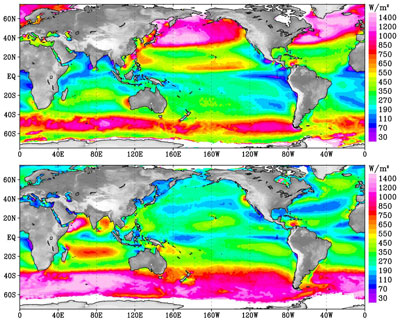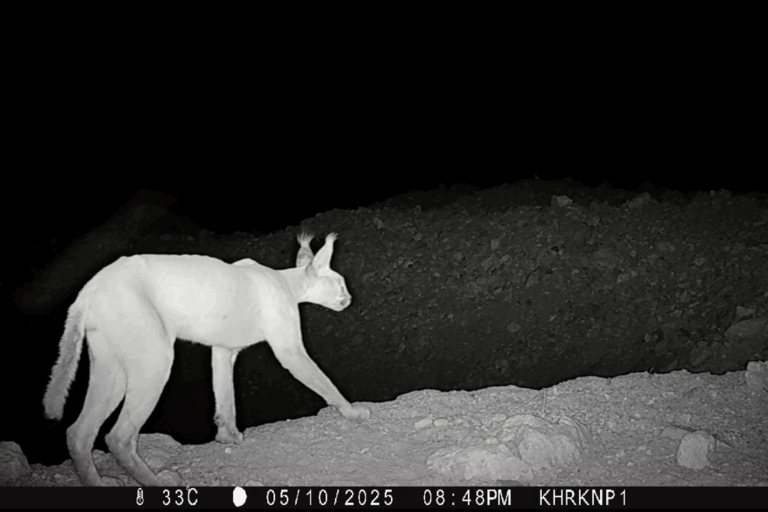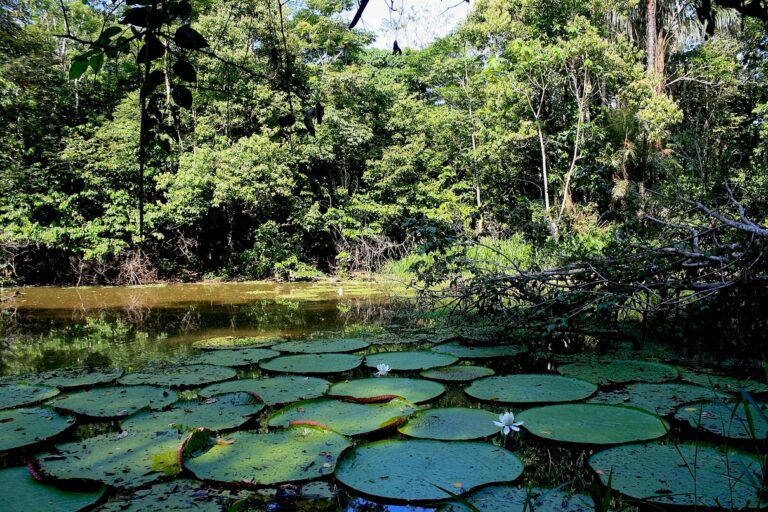Oceans hold vast potential for wind power
Oceans hold vast potential for wind power
mongabay.com
July 9, 2008
The North Pacific, Tasmania, New Zealand, Tierra del Fuego in South America, and the mid-latitudes of the Atlantic and Pacific oceans are potential locations for wind power generation, according to new satellite data from NASA.
NASA’s QuikSCAT satellite tracks the speed, direction and power of winds near the ocean surface. The data can help scientists generate global satellite maps that reveal promising ocean areas for wind farms.
“Wind energy is environmentally friendly. After the initial energy investment to build and install wind turbines, you don’t burn fossil fuels that emit carbon,” said Tim Liu of NASA’s Jet Propulsion Laboratory (JPL) in Pasadena, California. Liu is the lead author of a Geophysical Research Letters paper that describes the research. “Like solar power, wind energy is green energy.”

This is a portion of an image of QuikSCAT data that shows wind power density over global oceans for winter (top panel) and summer (lower panel) in the Northern Hemisphere. Red and white colors indicate high energy are available while blue color reflects lower energy. Image courtesy: NASAJPL |
Paul Dimotakis, chief technologist at JPL, estimates that wind energy has the potential to provide 10 to 15 percent of future global energy requirements. He says that Liu’s research shows that tapping ocean areas with high winds for wind energy could generate 500 to 800 watts of energy per square meter. While this is less than solar energy (which generates about one kilowatt of energy per square meter), “wind power can be converted to electricity more efficiently than solar energy and at a lower cost per watt of electricity produced,” according to a statement from NASA.
NASA says the data can also be used to advise ships on hazardous areas.














